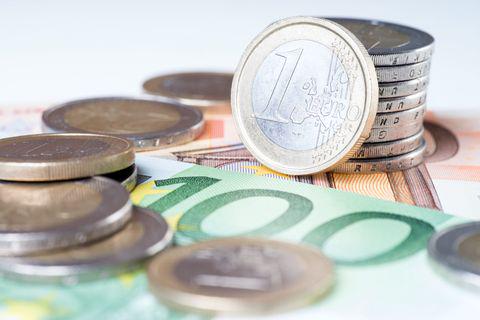
Recently, for the first time in two decades, the euro reached parity with the US dollar…
For a seamless experience, click “Redirect me.”

Don’t waste your time – keep track of how NFP affects the US dollar!
Data Collection Notice
We maintain a record of your data to run this website. By clicking the button, you agree to our Privacy Policy.

Beginner Forex Book
Your ultimate guide through the world of trading.
Check Your Inbox!
In our email, you will find the Forex 101 book. Just tap the button to get it!
Risk warning: ᏟᖴᎠs are complex instruments and come with a high risk of losing money rapidly due to leverage.
71.43% of retail investor accounts lose money when trading ᏟᖴᎠs with this provider.
You should consider whether you understand how ᏟᖴᎠs work and whether you can afford to take the high risk of losing your money.
Information is not investment advice
Geopolitical tensions are casting shadows on energy and oil markets with increased concerns about the potential invasion of Ukraine by Russia. In addition, the United States and its Western allies are considering imposing sanctions on Russia. So let's see how a possible escalation of tensions can impact markets.
1. Natural gas
Energy markets will be the most affected if tensions turn into an actual conflict or in case of economic sanctions on Russia. Ukraine is a major player when it comes to transferring energy. Most of the Russian natural gas exports pass through Ukraine.
Europe depends on Russia to get about 40% of its natural gas, which comes across pipelines that move through Belarus and Poland down to Germany. Besides, Nord Stream 1 goes directly to Germany and other countries across Ukraine. As part of possible sanctions, Germany said it might halt the new Nord Stream 2 gas pipeline from Russia if the latter invades Ukraine. If sanctions are imposed, markets expect natural gas exports from Russia to Western Europe via Ukraine and Belarus to decline significantly, pushing gas prices above $6.3 reached in late 2021.
2. Crude oil
Of course, oil markets will also be affected by sanctions or disruptions. Russia is the second-largest oil producer in the world.
Oil prices have already broken $90 a barrel for the first time since October 2014 on the back of political statements and news. That makes $100 a barrel possible soon, especially with the growing threats to the UAE from Yemen's Houthi movement. The negative news means supply disruptions, pushing prices to further highs.
JP Morgan believes that tensions threaten to create a "significant rise in oil prices." They pointed out that oil reaching $150 a barrel will reduce global GDP growth by 0.9% annually in the first half of the year, and inflation will exceed 7.2%.
3. Safe havens
The geopolitical concerns usually push investors back to US and German bonds, the safest asset. It might not be different this time.
In currency markets, EUR/CHF reflects geopolitical risk in the Eurozone. As a result, the Swiss Franc is considered one of the most potent safe havens. That's why it's not surprising that the franc has reached its highest level since May 2015, at the beginning of last week.
4. Grain and wheat
Any interruption in the flow of grain from the Black Sea region may affect the prices of these goods. It will also intensify food price inflation after the COVID-19 recession.
Four major exporters and producers of grain - Ukraine, Russia, Kazakhstan, and Romania - ship their goods from the Black Sea ports. Disorders may happen if any military action or sanctions on Russia appear.
According to data of the International Grain Council, Ukraine is expected to be the third-largest exporter of corn in the world in the 2021/22 season and the fourth-largest wheat exporter. Russia is the largest exporter of wheat in the world. The geopolitical risks in the Black Sea region will affect wheat, grain, and energy, pushing prices to rise higher.

Recently, for the first time in two decades, the euro reached parity with the US dollar…

The second earnings season of 2022 has almost begun. From banks and tech stocks to cars and the retail sector: in this outlook, we covered the most promising releases of this summer and made several projections on the companies’ prospects.

The stock market has reversed, and now it’s going lower and lower…

eurusd-is-falling-what-to-expect-from-the-future-price-movement

Greetings, fellow forex traders! Exciting news for those with an eye on the Australian market - the upcoming interest rate decision could be good news for Aussies looking to refinance or take out new loans. The Mortgage and Finance Association Australia CEO, Anja Pannek, has...

Hold onto your hats, folks! The Japanese yen took a nosedive after the Bank of Japan (BOJ) left its ultra-loose policy settings unchanged, including its closely watched yield curve control (YCC) policy. But wait, there's more! The BOJ also removed its forward guidance, which had previously pledged to keep interest rates at current or lower levels. So, what's the scoop? Market expectations had been subdued going into the meeting, but some were still hoping for tweaks to the forward guidance to prepare for an eventual exit from the bank's massive stimulus
Your request is accepted.
We will call you at the time interval that you chose
Next callback request for this phone number will be available in 00:30:00
If you have an urgent issue please contact us via
Live chat
Internal error. Please try again later